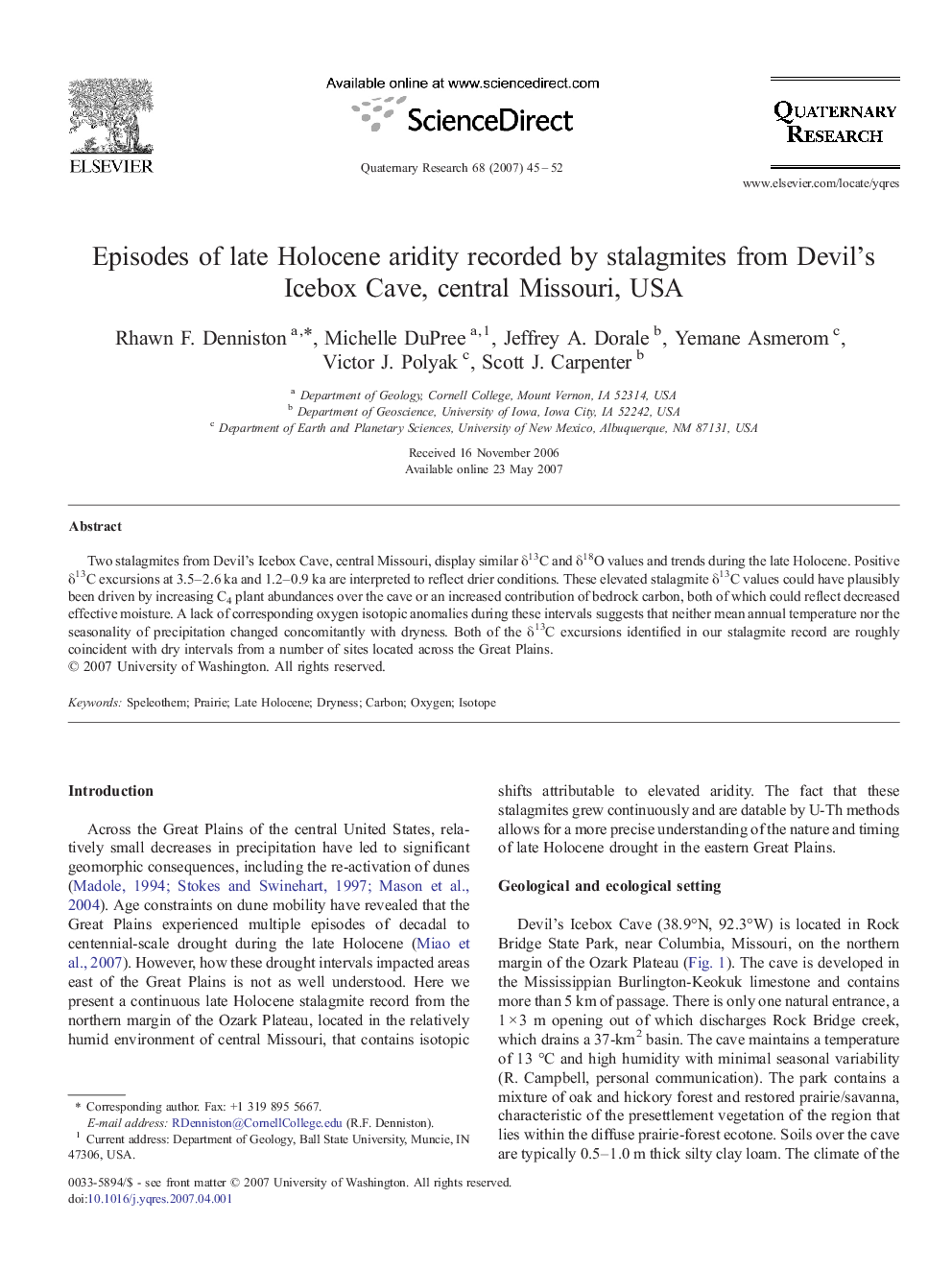| Article ID | Journal | Published Year | Pages | File Type |
|---|---|---|---|---|
| 1046196 | Quaternary Research | 2007 | 8 Pages |
Two stalagmites from Devil's Icebox Cave, central Missouri, display similar δ13C and δ18O values and trends during the late Holocene. Positive δ13C excursions at 3.5–2.6 ka and 1.2–0.9 ka are interpreted to reflect drier conditions. These elevated stalagmite δ13C values could have plausibly been driven by increasing C4 plant abundances over the cave or an increased contribution of bedrock carbon, both of which could reflect decreased effective moisture. A lack of corresponding oxygen isotopic anomalies during these intervals suggests that neither mean annual temperature nor the seasonality of precipitation changed concomitantly with dryness. Both of the δ13C excursions identified in our stalagmite record are roughly coincident with dry intervals from a number of sites located across the Great Plains.
